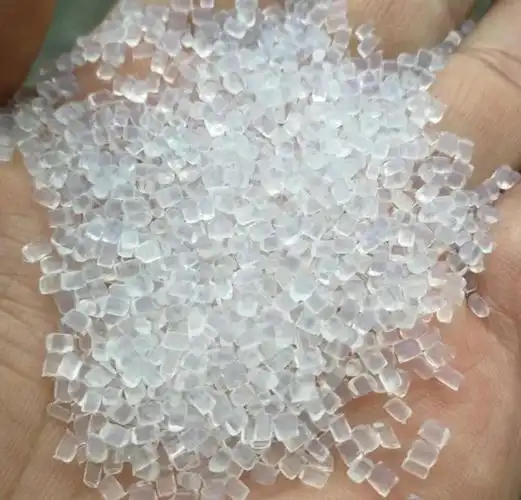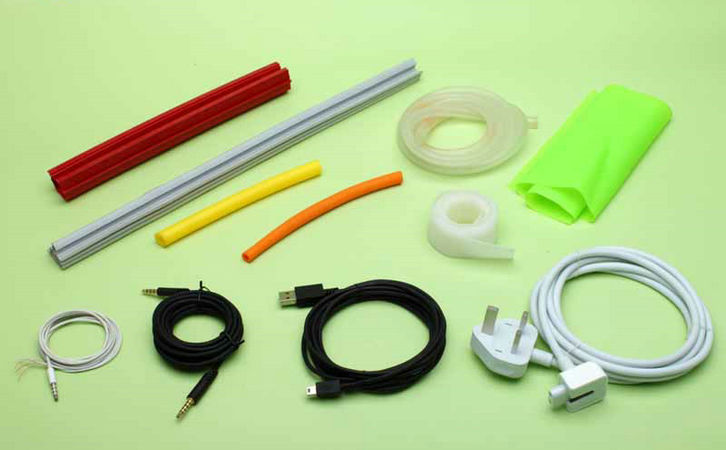In the realm of materials science and manufacturing, questions about the properties and behavior of various polymers under different conditions are both common and crucial. As someone who has dedicated years to working with thermoplastic elastomers (TPEs) and other materials, I’ve encountered numerous queries regarding their compatibility with extreme temperatures, such as boiling water. Today, I aim to shed light on whether TPE soft rubber raw material can indeed be soaked in boiling water without suffering adverse effects.
Understanding TPE: A Comprehensive Overview
Before diving into the specifics of boiling water and TPE, it’s essential to have a solid grasp of what TPE is and why it’s so widely used. TPEs are a class of copolymers or physical blends of polymers that combine the properties of thermoplastics and elastomers. This unique combination gives TPEs their characteristic flexibility, elasticity, and the ability to be processed like thermoplastics, making them incredibly versatile in various applications.
TPEs are found in a plethora of products, ranging from automotive components and medical devices to consumer goods like toys, handles, grips, and even some food-contact items. Their soft-touch feel, good chemical resistance, and recyclability are among the reasons for their popularity. However, when it comes to exposure to high temperatures, such as boiling water, TPEs can exhibit varying behaviors depending on their specific formulation and intended use.

The Science Behind TPE and Heat
To understand whether TPE can withstand boiling water, we need to delve into the science of how polymers interact with heat. Polymers, including TPEs, are made up of long chains of molecules. When heated, these chains can gain enough energy to move more freely, which can lead to changes in the material’s physical properties.
Glass Transition Temperature (Tg): This is the temperature at which a polymer transitions from a hard, glassy state to a softer, more rubbery state. For TPEs, the Tg can vary widely depending on their composition. Below the Tg, the polymer is rigid and brittle; above it, the polymer becomes more flexible and elastic.
Melting Temperature (Tm): For thermoplastic polymers, the Tm is the temperature at which the polymer chains can move freely enough to flow, allowing the material to be molded or shaped. TPEs, being thermoplastic elastomers, also have a Tm, although it may not be as pronounced as in some other thermoplastics due to their elastomeric nature.
Thermal Degradation: At sufficiently high temperatures, polymers can undergo thermal degradation, where the polymer chains break down, leading to a loss of physical properties and potentially even the release of harmful substances.
TPE and Boiling Water: A Temperature Challenge
Boiling water has a temperature of approximately 100°C (212°F) at standard atmospheric pressure. This temperature is well above the Tg of many TPEs, which means that when TPE is exposed to boiling water, it will likely become softer and more flexible. However, whether this softening is reversible or leads to permanent damage depends on several factors:
TPE Formulation: Different TPE formulations have different thermal properties. Some TPEs are designed to withstand higher temperatures without significant degradation, while others may start to soften or even melt at relatively low temperatures.
Exposure Time: The duration for which the TPE is exposed to boiling water also matters. Short-term exposure may only cause temporary softening, while prolonged exposure could lead to more severe degradation.
Stress and Strain: If the TPE is under stress or strain while being exposed to boiling water, it may be more prone to deformation or failure.
Environmental Factors: Other environmental factors, such as the presence of chemicals or UV radiation, can also affect the TPE’s response to heat.
Practical Considerations and Real-World Examples
Given the above factors, let’s explore some practical considerations and real-world examples to better understand how TPE behaves when soaked in boiling water.
Example 1: TPE Used in Food-Contact Applications
Some TPEs are specifically formulated for use in food-contact applications, such as kitchen utensils or baby bottle nipples. These TPEs are typically designed to withstand high temperatures without releasing harmful substances. However, even these TPEs may soften or deform if left in boiling water for an extended period.
Recommendation: If you’re using a TPE product in a food-contact application that may come into contact with boiling water, check the manufacturer’s specifications to ensure it’s suitable for such use. Avoid leaving the product in boiling water for prolonged periods, and follow any care instructions provided.

Example 2: TPE Used in Automotive Components
In automotive applications, TPEs are often used for components like seals, gaskets, and handles. These components may be exposed to high temperatures during operation, but they’re not typically soaked in boiling water. However, if an automotive component made of TPE were to be accidentally exposed to boiling water (e.g., during a car wash), the TPE would likely soften but may not suffer permanent damage if the exposure is brief.
Recommendation: For automotive components made of TPE, it’s generally best to avoid exposing them to boiling water if possible. If accidental exposure occurs, inspect the component for any signs of deformation or damage and replace it if necessary.
Example 3: TPE Used in Medical Devices
Medical devices made of TPE, such as catheters or tubing, may need to withstand sterilization processes that involve high temperatures. However, these sterilization processes are typically carefully controlled to ensure the TPE isn’t damaged. Soaking TPE medical devices in boiling water isn’t a standard sterilization method and could potentially damage the device.
Recommendation: For medical devices made of TPE, follow the manufacturer’s instructions for sterilization and cleaning. Avoid using boiling water as a sterilization method unless specifically recommended by the manufacturer.
Table: Thermal Properties of Common TPE Types
To provide a more concrete understanding of how different TPE types may respond to boiling water, here’s a table summarizing the approximate thermal properties of some common TPE types:
| TPE Type | Glass Transition Temperature (Tg) | Melting Temperature (Tm) | Suitability for Boiling Water (Short-Term) |
|---|---|---|---|
| Styrenic TPE | -50°C to 0°C | 100°C to 200°C | Moderate (may soften but not melt) |
| Olefinic TPE | -60°C to -20°C | 120°C to 250°C | Good (minimal softening) |
| Polyurethane TPE | -70°C to -30°C | 150°C to 220°C | Variable (depends on formulation) |
| Polyester TPE | -40°C to 0°C | 180°C to 260°C | Moderate to Good (depends on formulation) |
Note: The values provided in the table are approximate and can vary widely depending on the specific formulation and processing conditions of the TPE.
Testing and Validation
Given the variability in TPE formulations and their responses to heat, it’s crucial to conduct testing and validation if you’re unsure whether a particular TPE can withstand boiling water. Here are some steps you can take:
Consult the Manufacturer: Reach out to the TPE manufacturer to inquire about the material’s thermal properties and its suitability for exposure to boiling water.
Conduct Heat Aging Tests: Perform heat aging tests on samples of the TPE to simulate exposure to boiling water. This can help you assess the material’s long-term behavior under such conditions.
Evaluate Physical Properties: After heat aging, evaluate the TPE’s physical properties, such as tensile strength, elongation at break, and hardness, to determine if any degradation has occurred.
Visual Inspection: Look for any signs of deformation, melting, or other visual changes in the TPE after exposure to boiling water.

Conclusion
In conclusion, whether TPE soft rubber raw material can be soaked in boiling water depends on several factors, including the TPE’s formulation, exposure time, stress and strain conditions, and other environmental factors. While some TPEs may be able to withstand short-term exposure to boiling water without significant damage, others may soften, deform, or even melt.
To ensure the best performance and longevity of your TPE products, it’s essential to understand the material’s thermal properties and follow the manufacturer’s recommendations for use and care. If you’re unsure about a particular TPE’s suitability for exposure to boiling water, conducting testing and validation is always a good idea.
Remember, every application is unique, and what works for one may not work for another. By taking the time to understand your TPE material and its behavior under different conditions, you can make informed decisions that lead to successful and long-lasting products.

Related Questions and Answers
Q1: Can I use boiling water to sterilize TPE products?
A1: It depends on the specific TPE formulation and the manufacturer’s recommendations. Some TPEs may be able to withstand short-term exposure to boiling water without significant damage, but others may soften or deform. Always check the manufacturer’s specifications and follow their recommended sterilization methods.
Q2: How can I tell if a TPE product has been damaged by boiling water?
A2: Look for signs of deformation, melting, or other visual changes in the TPE product. You can also evaluate its physical properties, such as tensile strength and elongation at break, to determine if any degradation has occurred. If in doubt, consult the manufacturer or a materials expert.
Q3: Are there any TPEs that are specifically designed to withstand boiling water?
A3: Yes, some TPEs are formulated to have higher thermal stability and can withstand exposure to boiling water without significant damage. These TPEs are often used in applications where high-temperature resistance is required, such as in certain food-contact or medical devices.
Q4: Can I use a heat gun or other heating device to soften TPE instead of boiling water?
A4: Yes, using a heat gun or other heating device can be an effective way to soften TPE for shaping or molding purposes. However, be careful not to overheat the TPE, as this can lead to thermal degradation. Always follow the manufacturer’s recommendations for heating temperatures and times.
Q5: What should I do if a TPE product accidentally comes into contact with boiling water?
A5: If a TPE product accidentally comes into contact with boiling water, inspect it for any signs of deformation or damage. If the product appears to be intact and functions normally, it may be safe to continue using. However, if you notice any issues, such as reduced flexibility or signs of melting, it’s best to replace the product to ensure safety and performance.





